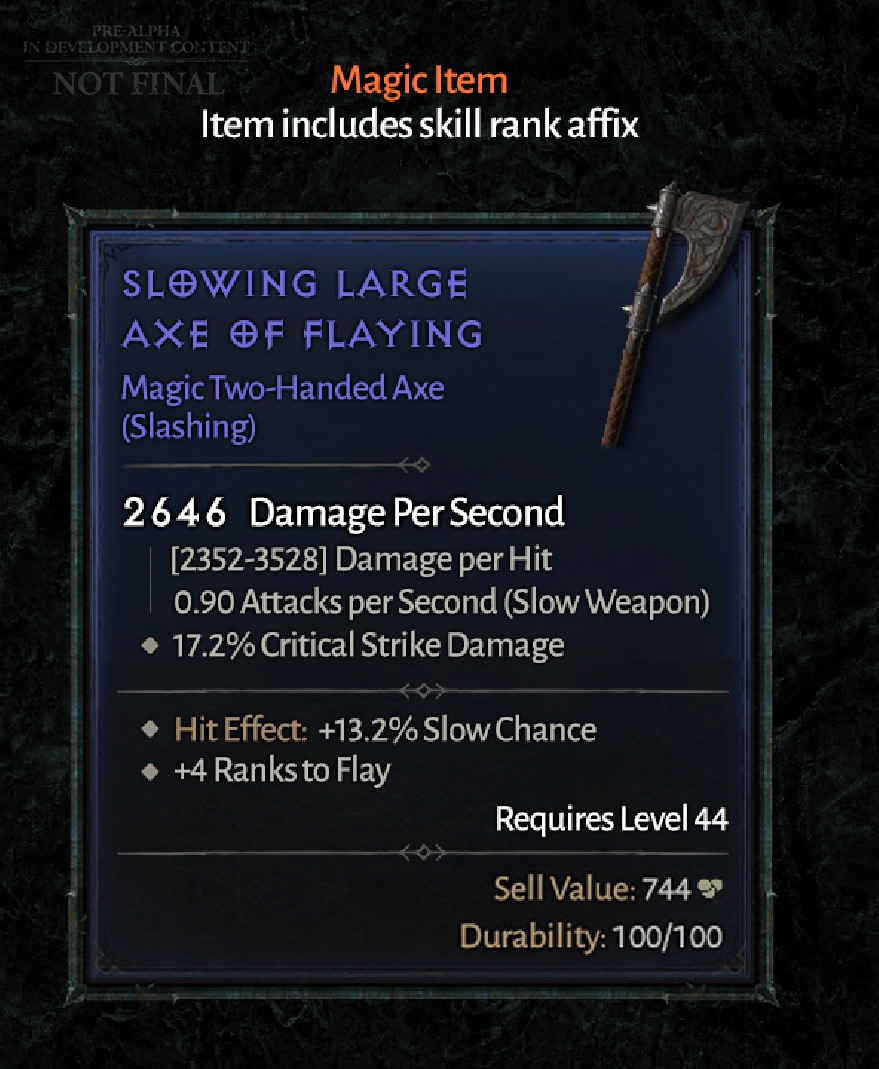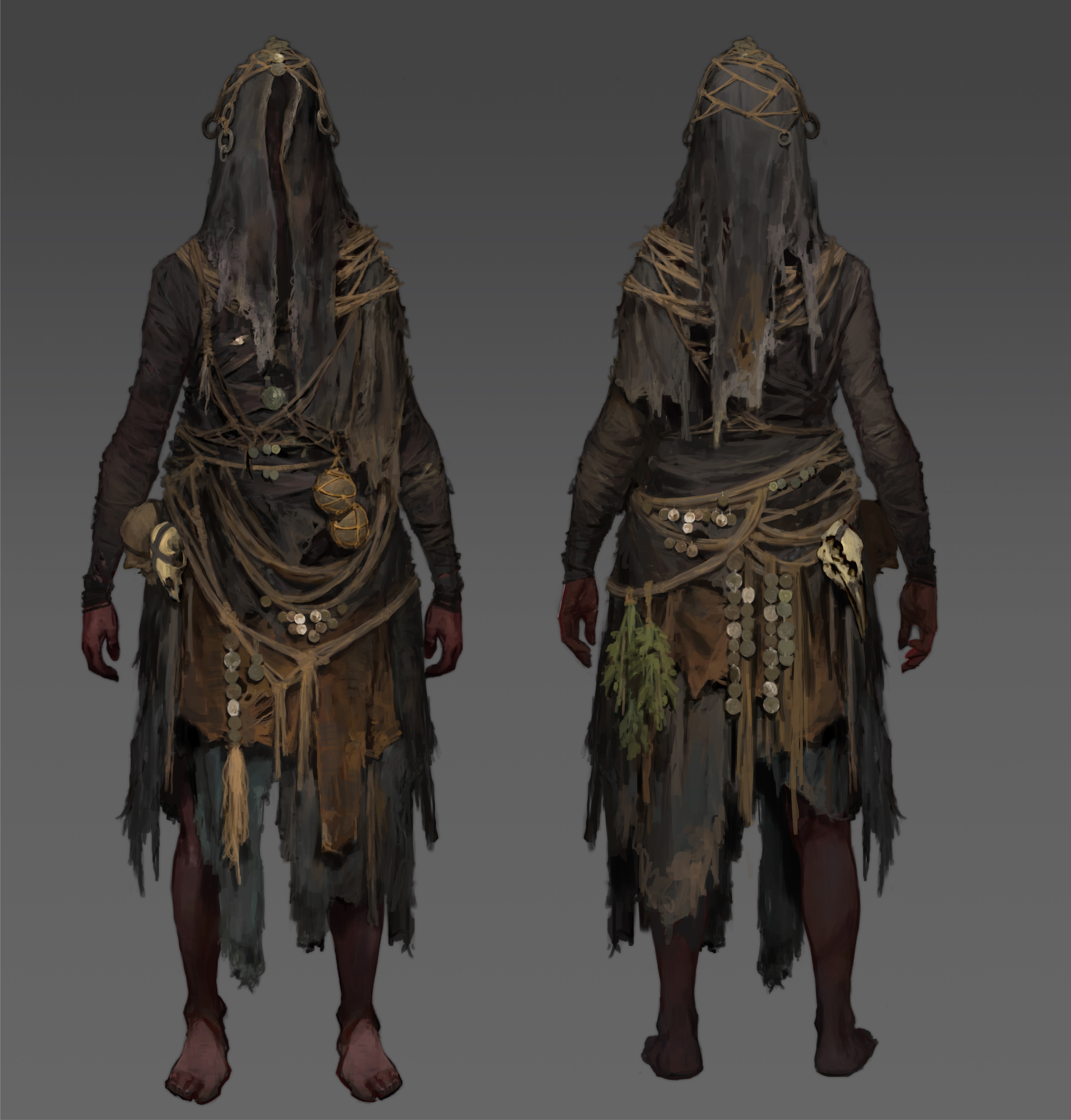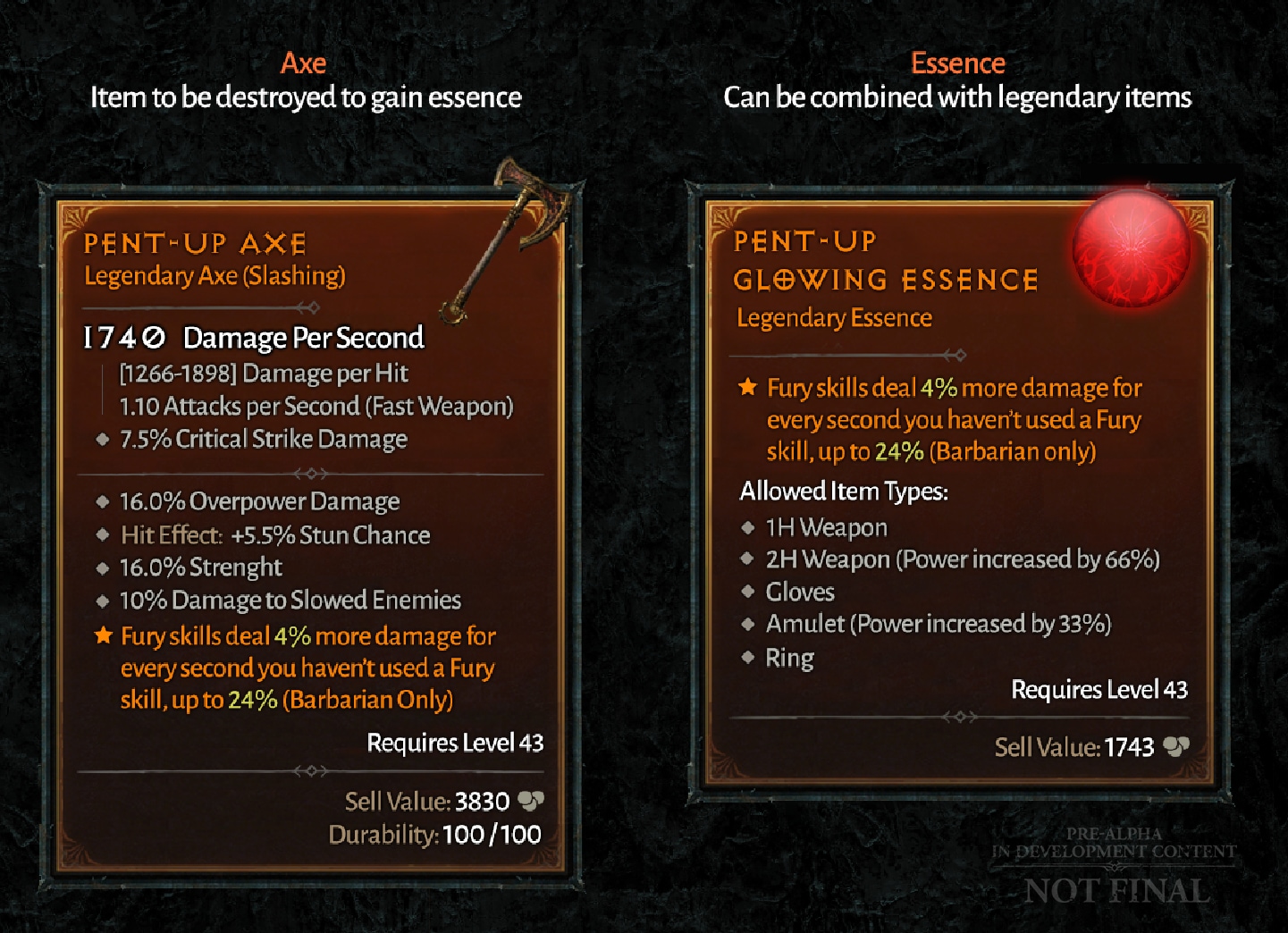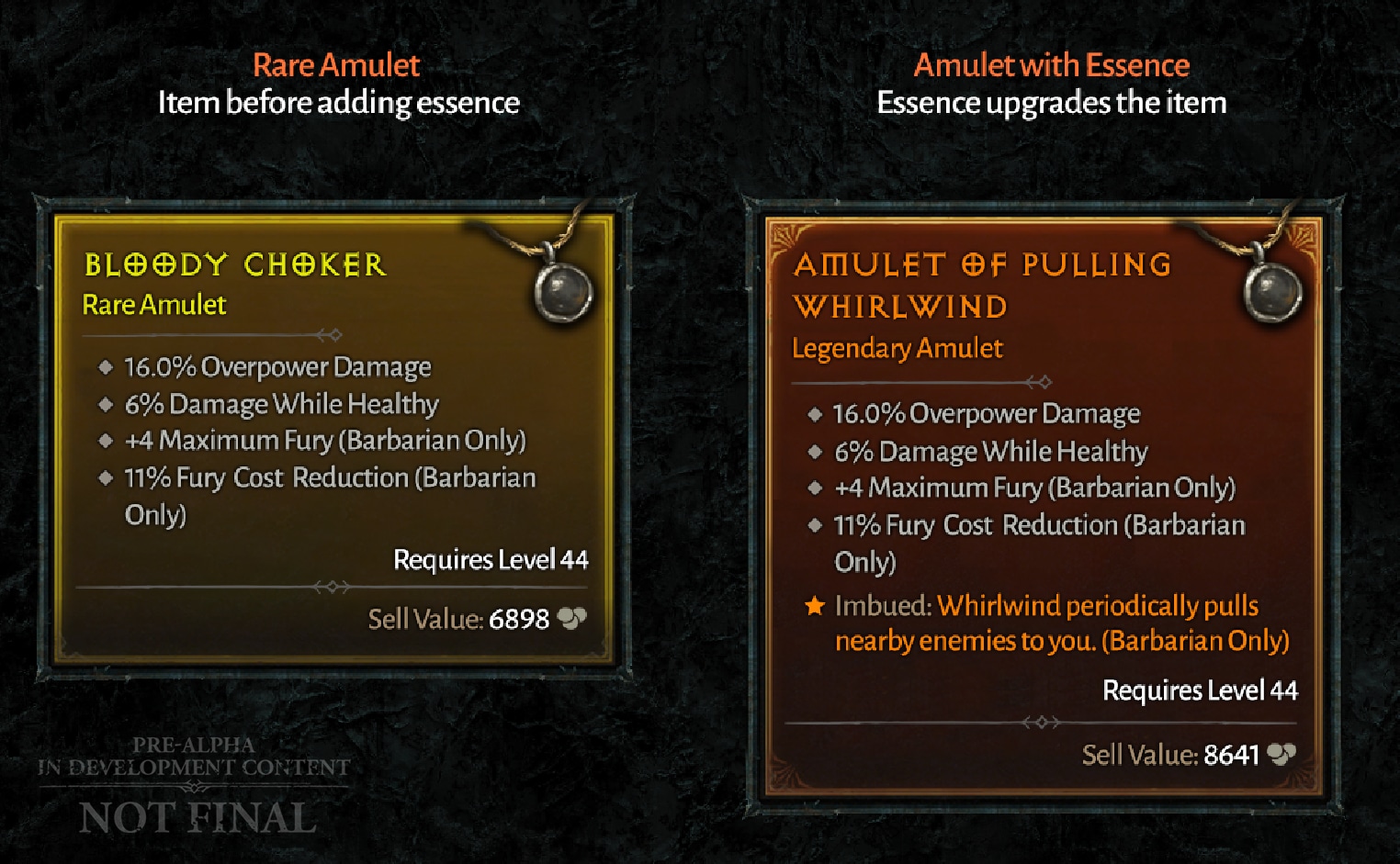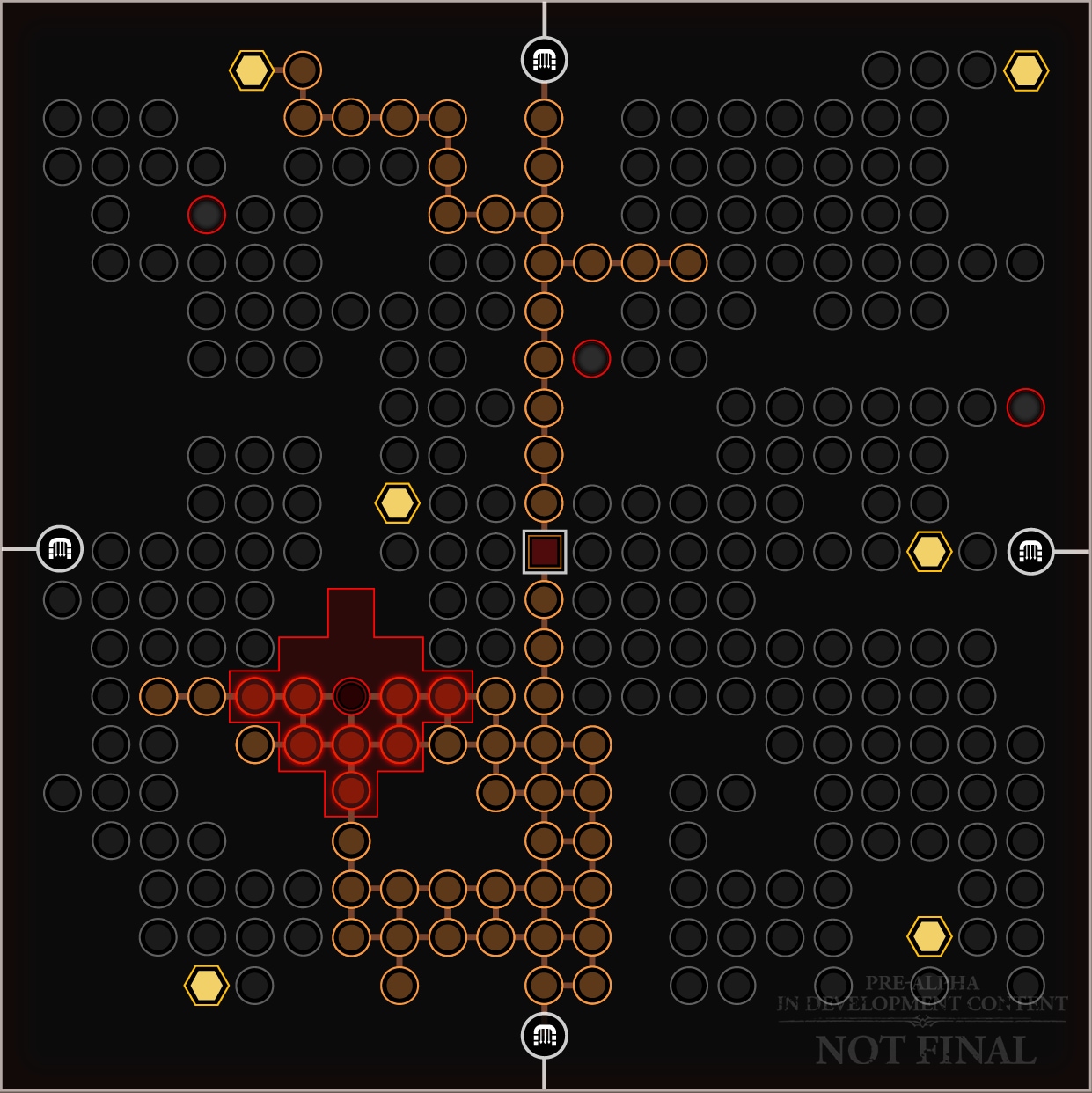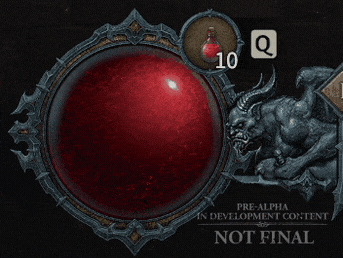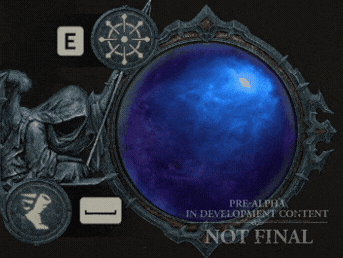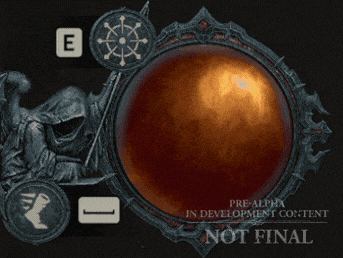Diablo IV Quarterly Update—December 2021
Table of Contents
Hello and welcome to the year-end Diablo IV Quarterly Update.
We hope you enjoyed October's deep dive into sound design, the atmospheric ambient tracks, and peeking behind the scenes of how game sounds are made.
Since our last blog, we've been hard at work adding new content and systems to the game. We’ve made big strides, with every build of the game containing a host of expanded content, new art, balance changes, and other iterations. In fact, the team is currently playtesting an internal release of the game that represents a significant milestone. We have much to share with you today as a result, so let's dive in.
First, Lead Systems Designer Joe Piepiora will discuss updates to key elements of itemization. These include the return of +Skills on items, a new way to interact with legendary powers, and some early work on targeted drops. After that, grab a warm beverage and a comfortable chair as he walks us through Diablo IV's completely new end-game character growth system: the Paragon Board.
Next, Lead Visual Effects Artist Daniel Briggs will describe the philosophy that allows our talented VFX team to create huge explosions and eye-popping skill effects while keeping the game clear and readable, even when there are many players and monsters on the screen at the same time. He'll also go into detail on how Diablo IV's new game engine has allowed us to make frame-by-frame combat more precise and nuanced, while leveling up our effects to take advantage of the new lighting system. Finally, feast your eyes upon a plethora of skills across all four announced classes that show off our skill-driven death system.
We hope you enjoy this update and look forward to your thoughts and reactions. We'll be back in the new year and are ever grateful to have you with us on this journey.
-Joe Shely,
Game Director, Diablo IV
The Itemization of Diablo IV
Greetings, Heroes of Sanctuary!
We are thrilled to once again dole out a whole heap of info on the state of systems and endgame in Diablo IV. I’m Joe Piepiora, the Lead Systems Designer, and today I’m going to share some details on two major features of Diablo IV: itemization updates and our plans for Paragon.
+Skill Rank Affixes
In Diablo IV, the +Skill Rank affix returns. As players invest points in skills, they grow in potency, and finding items with +Skill Rank can speed that along. As a bonus, when the player equips an item with +Skill Rank for a skill they haven’t learned, they will have access to that new ability. It’s a great way to try out new skills before you’re able to invest in them. Getting a lucky drop that nets you a skill you’d like for your build ten levels before you would otherwise have access to it is a huge boost!
Legendary and Unique Items
As Joe Shely discussed back in our December 2020 update, Legendary and Unique Items remain a core part of the Diablo item chase experience. We’ve made a foundational change to Legendary items in Diablo 4 by allowing legendary powers to appear on multiple item slots. Now, if you’re searching for a legendary power, like Martial Arts—which enhances the Barbarian’s kick ability—you may find it on rings, chestplates, or helmets; there’s no need to hunt for a specific item type any longer.
Now, the real question is what happens when you find a power on an axe when you really wanted it on a ring? Or you found a great legendary amulet, but can’t use the power? Well, that is when we get to introduce our new friend, the Occultist.
The Occultist can extract a legendary power from a Legendary item, crystallizing it into Essence while destroying the item in the process. That Essence can then be implanted into another Legendary item, overriding the power that was present in the item at that time. Essence material can also be stored and used at a later time.
Unique Items cannot be modified in this way, keeping their fantasies intact—and as their name implies—unique.
Hunting for Items
Sanctuary is a vast world, filled with forlorn trails through werewolf-infested forests, withered heaths crawling with cannibals, and fog-choked graveyards crawling with the restless dead. There are plenty of enemies and monsters for the hero to encounter. Each of these monsters seem to enjoy collecting certain types of items and will be somewhat more likely to drop those items than others. While bandits are fond of Maces, Crossbows, and Boots, if you’re hunting for a new pair of Pants, you'd do well to kill some of the Drowned instead.
In past discussions, we’ve received feedback that it seems deflating for so much of a character’s power to be delivered through the gear that they have equipped. Customizing and planning a character feels less rewarding if it doesn’t play a big role in how the character performs in combat. We hear you loud and clear, and in Diablo IV, we have placed a stronger emphasis on character power that is earned by all the little decisions you make while leveling up and exploring the world of Sanctuary. While we aren’t talking about everything we have planned for character power today, I’m happy to talk about one feature in particular, the Paragon Board.
The Paragon Board
In Diablo IV, we have placed a heavy emphasis on build customization, ensuring that you can have plenty of control over how your hero grows. The Paragon Board unlocks for each class at level 50 and is a distillation of this focus. Your hero begins their journey through the Paragon system at the central starting tile of their class’s intro board, and from there, you make selections radiating outward. Once your hero reaches a gate tile, you’ll choose which new paragon board you would like to attach to at that location. The desired outcome is a personalized set of bonuses that will empower your hero and honor your dedication to their progression, that will remain fun to tweak and adjust over many playthroughs.
There is a lot to take in with the image below, so I’ll walk through some aspects of what we’re looking at here.
The Paragon Board is comprised of many fixed tiles. As the Barbarian earns experience, they will earn Paragon points, which are used to unlock a connected tile. There are a few varieties of tiles that I want to walk through.
Normal Tiles
These tiles are straightforward, providing a small but meaningful stat boost. Normal Tiles are connective tissues that can be found throughout the board and are quite common.
Magic Tiles
Magic Tiles are found in clusters throughout the board and provide a potent, more diverse set of benefits. As you might expect, they are less common than Normal Tiles, but are still plentiful.
Rare Tiles
Rare Tiles offer significant boosts in power. Upon entering the Paragon Board for the first time, these represent great goals for players to chase, particularly once you’ve narrowed builds down towards highly specific goals. Rare Tiles also have additional powers that unlock once the hero has raised an attribute to a sufficient level, requiring some choices to be made when plotting your path through the board.
Legendary Tile
After the first Paragon Board, each new board has a single Legendary Tile that can be found at its center. Legendary Tiles impart a new Legendary Power to the character that earns it.
Glyphs and Sockets
A Socket is a special tile that can contain a Glyph. Glyphs are items found throughout Sanctuary that, when embedded into a Paragon Board, confer various benefits based upon the number of active tiles within their radius.
Glyphs can also be leveled up by delving into some particularly dangerous dungeons. Leveling up a Glyph extends the radius of their effect, allowing each one to draw power from or impart power to even more active tiles.
Gate Tiles and Board Selection
A single Gate Tile lies at each edge of the Paragon Board. As you progress through the Paragon Board, you will eventually reach a Gate Tile, which upon unlocking will allow you to select a new Paragon Board to attach to your existing Board. Each of these boards has unique Tile layouts, new Magic and Rare Tiles, and a new Legendary Tile at the center.
The Paragon Board is extended from these Gate Tiles. Upon selecting from the Paragon Board list, you will be able to place the board down, connecting it to the newly unlocked Gate Tile. You may also optionally rotate that newly placed board.
We’re hard at work on these and other features that we’ll be able to share more about in future updates. Though for now that’s all from the systems team. Thanks for reading and please share any feedback you have on social media, Reddit, or our forums! We’ll see you in Hell!
Visual Effects in Diablo IV
Thanks for joining us! My name is Daniel Briggs, and I am the Lead Visual Effects Artist for Diablo IV. The VFX team gets to contribute to features across the entire game, but today we will focus on the work we do to support combat. VFX artists collaborate with designers and other art teams to create strong thematic identities for the hero classes and breathe life into monsters, in order to deliver the visceral, gruesome combat players have come to expect.
VFX is an integral part of the combat experience for all Diablo games. With Diablo IV, we wanted to step up the fidelity of our effects using Physically Based Rendering (PBR), as well as better support the core pillars of gameplay: deep hero customization, itemization, and combat readability.
Visual Effects - Philosophy
Every effect plays a role in the final composition of our game. It is important to understand the context of an effect, and how it best serves your experience.
One of our core values at Blizzard Entertainment is “Gameplay First,” and this drives a lot of the artistic decisions we make while developing visual effects for the game. Moment-to-moment gameplay is the focal point within the composition of Diablo IV: it should draw your attention. To achieve this, we must consider things like player skills, monster telegraphs, traps, damage areas, and character states. The visual effects for each of these components must be readable in all areas and lighting conditions, so you can quickly understand what is happening and use that information to make informed decisions.
In the chaos of combat, you’ll need to be smart—seeing a Legendary item drop is exciting, but picking it up is not as important as reacting to a monster’s attack that can one-shot Hardcore characters! Our goal is to balance the primary, secondary, and tertiary reads to help you understand what is happening. To do this, we reserve visually loud FX for powerful skills, like ultimate abilities, while weaker skills meld into the background. Each class has abilities that range from low to high in costs, cooldowns, and power. In tandem, classes have a range of visual intensity that increases with skill power.
Combat Improvements
To enhance the feel of combat, we have made several improvements to the way damage is applied in our game. In previous iterations of Diablo, an area-of-effect (AOE) or melee skill would be a single area of damage that is applied on a single frame. Thanks to our gameplay engineers, we can now animate target areas (what we call payloads) over multiple frames, which allows us to line up the animated target areas with the animated VFX that play out.
For example, Whirlwind in Diablo III is a cylinder shape surrounding your Barbarian, which applies damage every couple of frames at a rate based on your attack speed. In Diablo IV, Whirlwind is an animated pie shape that animates with your character. AOEs expand outward with time, and melee swings match the motion of your weapon. Animated target areas improve accuracy to the way we apply damage in Diablo IV; it makes combat feel more impactful, and monster ragdolls more visceral. Animated payloads also add a subtle timing aspect to a variety of skills.
Additionally, we have revamped the way we apply hit effects to monsters, so impacts flow with the direction of a spell or melee attack. We use data defined in the animation and animated target area to find the most accurate place to hit a monster, and where to apply a directional physics force to the ragdoll. In so few words, if you hit a goat-man in the knee, the blood spray would come from his knee. The physics force applied to the goat-man’s knee would send it flying as if you kicked the legs out from under him.
Visual Effects - Casting and Receiving Light
In Diablo IV, we use a PBR (physically based rendering) lighting model, which means our materials look and react to light in a realistic way. This approach brings huge rendering improvements, but this can be counterintuitive to what a player might expect for class and monster abilities. As an example, think about what a campfire looks like in full daylight—pretty lackluster, right? Next, imagine what a dust cloud or smoke plume would look like in the dead of night—it'd be nearly impossible to see. To account for this, we’ve built an engine and shader library that lets us break PBR rulesets in artistic ways. This ensures important gameplay moments shine through as clearly as possible while keeping immersive elements full PBR so they can realistically react to lighting.
Previous iterations of Diablo use primarily “unlit” particles, meaning they are not affected by the environment’s lighting. These particles give you amazing control over what the art will look like: what you paint is what you get. The downside to unlit particles is that art may look too bright in a dark dungeon, or VFX color schemes may not feel cohesive within every environment.
In Diablo IV, we use lit VFX that meld into the environment’s lighting, creating a more immersive experience. Using Whirlwind as an example (seen in the video above)—in bright daylight, the blade reflects light from the sun. In a dark dungeon, it will reflect more subtle light sources, like torches. The dust kicked up by the skill is also lit by the environment, so it blends artfully into the world.
If we rely solely on environment lighting and follow true PBR rules, then gameplay readability is muddied, particularly in dark environments where a weapon swing would naturally be hard to see. To counteract this, many VFX have emissivity to cast light onto the environment. Several ultimates in our game will even allow you to change the weather and lighting of the environment for a limited duration. We strive for a healthy balance of gameplay clarity and thematic immersion.
Dynamic Player Skills
At the end of the day, it doesn’t matter what the art looks like if the gameplay isn’t fun. One of the goals for creating player skills is to ensure that the System Design team has a variety of modifiers they can utilize to create meaningful skill trees, class mechanics, Legendary items, and Paragon Boards.
Choices should affect more than your character’s stats. Once we have a class skill we are happy with, the VFX team adds the ability for developers to dynamically change the size, intensity, and duration of a skill. The visual intensity of a skill will increase as you stack upgrades and items that increase the power of that ability.
In addition to these skill modifiers, we create variants of abilities that completely change the functionality of a skill or the damage type that it deals. These skill variants can be changed by the scale, intensity, and duration modifiers as well. This allows variants of skills to be affected by a wider range of legendary modifier groupings. Your skill tree/paragon decisions, along with the items you have equipped, will make your character look and play differently from other characters of the same class.
Each of these ranges is handcrafted by an artist to ensure the art holds up at all supported sizes and intensities. We do not uniformly scale every piece of an effect when changing size and intensity; we modify things like spawn rate, velocity, emissivity, and color ranges to make certain the art still fits in the world of Diablo.
We want your character to look incredible as well! Our items are built in a way that allows us to easily apply weapon buffs to any weapon in the game. Not only will your legendary items do awesome things, but they will make your character look amazing as well. Here is an example where we apply the same fire and poison buff to several weapons in our game.
Skill Driven Deaths
Sanctuary is a dark, gothic world filled with horrific monsters that do horrendous things. To survive in this bleak landscape, you must be merciless toward your enemies. We are bringing back a popular feature from Diablo III: skill-driven deaths. This system allows you to decapitate, bisect, freeze, shatter, eviscerate, and burn your enemies, to give a few examples.
With our new PBR pipeline, we can make blood, viscera, and gore even more realistic by having it react properly to the lighting of an environment. Every monster is built with a skeletal and muscular structure used for killing them in brutal ways. If your character is in the thick of combat, they will be covered in the blood spatter of nearby monsters. Over time, your character’s armor will transition back to being spotless.
The Sorceress studies the art of elemental magic. They slow enemies with cold before freezing them solid and shattering them to pieces. They strike their enemies with stunning bursts of lightning, causing bodies to pop and sizzle. Enemies collapse to the floor and char to the bone as the Sorceress engulfs foes in fire.
Some examples of death types that Sorceresses can trigger:
- Freeze/Shatter - Break frozen monsters into pieces
- Char - Singe the corpse of a monster with lightning
- Burn – Scorch the monster’s flesh, leaving the remains of a charred skeleton
The Barbarian takes pride in their physical capabilities. Their arsenal of weaponry makes them deadly in close combat. With the power of their ancient bloodline, Barbarians crush foes into piles of gore or send them flying across the battlefield. Their brute strength is equally matched by their speed and ferocity as they unleash fury on the battlefield, dismembering limbs from all that stand in their way.
Some examples of death types that Barbarians can trigger:
- Crush – Flatten a monster under the weight of a heavy object
- Decapitate - Remove a monster’s head from its body
- Cut In Half - Sweet :)
- Break Lower Limbs- The monster’s lower body is shattered, splitting several of their joints
The Rogue is dexterous; their attacks are methodical. Monsters are often oblivious to their presence until it is far too late. A precise stab from one of their daggers, or a well-placed arrow, is enough to bring most monsters to the floor. The Rogue finds the most opportune time to take on a fight, and they imbue weapons to gain an advantage. Shadow magic can make a superb distraction, but their shadow clones are as deadly as their blades.
Some examples of death types that Rogues can trigger:
- Eviscerate – Spill the insides of a monster
- Shadow – Shadow energy deteriorates the life from a monster's flesh.
- Freeze/Shatter - Break frozen monsters into pieces
- Poison – The monster’s skin melts off leaving a heap of muscle and bone
- Flay – Flay the skin from an enemy, leaving the muscle structure intact
The Druid is one with nature magic. They conjure storms and call down lightning on their enemies. They control the battlefield with gusts of wind as their animal companions tear the flesh from monsters. Druids manipulate the earth with nature magic, molding it to their will and bludgeoning enemies from afar. As their enemies approach, they see the innate power of the Druid, shapeshifting fluidly between an agile werewolf and a hulking werebear.
Some examples of death types that Druids can trigger:
- Roadkill – The monster is crushed by a moving object, leaving a smear of blood on the ground
- Devoured– The monster's flesh is eaten away by a swarm of ferocious bites
- Lightning Gib – Lightning causes the monster’s body to pop, exploding into pieces
- Maul – The monster’s skin is completely mangled, covering them in blood
That is everything we have to share with you today. It has been a dream to work on this franchise, and I’ve really enjoyed the opportunity to share some of our development process with the community.
Thank you for reading our last quarterly update blog for 2021. I hope you found it exciting and interesting. We are actively listening to your feedback, and we strive to make Diablo IV the dark, gothic game we all want to play. Please continue to share your thoughts and provide feedback on social media, Reddit, and our forums!
